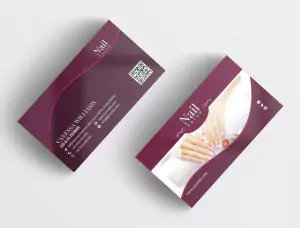Business Cards for Bloggers – 8 Things Never to Forget
mark / 20 June 2016

As bloggers, our marketing arsenals generally include email signatures, Facebook pages, Twitter timelines, but it’s crucial to have good old-fashioned business cards at hand for when you meet people offline. Even if you’re a new blogger, and/or don’t go to conferences yet, business cards are an important tool for introducing yourself to readers or potential partners. Here’s what to include on them:
1. Logo/Blog Header
If you have a logo for your blog, or if it’s the same as your header, use this on your business cards; ideally, you want the person with your business card to notice continuity when moving from looking at that to your blog. If you have an overarching company that includes your blog, among other things, use the logo for this company.
2. Your Blog’s Name & URL
Obvious, maybe, but even if your blog name is also your URL, I think you should include both on your business cards, not just the URL. And I always abbreviate the URL to be blogname.com (without the http://…..).
3. A Photo
If you’re a personal style blogger, this is a must. If you’re not a personal style blogger, including a photo of yourself on your business cards can still be a great idea. A photo helps make your card stand out and can trigger a memory of when/where they met you.
4. Your Name
It may seem obvious, but I’ve seen business cards with just the blog name and no personal name. Having your name on the card helps people remember you and makes follow-ups easier.
5. Contact Information
Email address!!! Use the most professional one, such as yourname@blogname.com, instead of generic emails like info@blogname.com or admin@blogname.com.
6. Phone Number
Although not always included, a phone number can be useful. If you frequently hand out cards, you may want your number printed rather than writing it manually each time.
7. Social Media Handles
Only include the social media accounts you actively use. If you rarely post on a certain platform, leaving it off the card is better than having outdated content.
8. Tagline
A tagline is a short, one-sentence description of your blog or business. It helps people quickly understand what you focus on and what makes you unique.
Though this may seem like a lot of information to fit on a small business card, a well-designed card can make it easy for people to remember, contact, and interact with you. The design should be an extension of your blog’s style and branding.
I personally use GoPrint for my cards; it’s easy to use and inexpensive, but I also love Moo cards for bloggers. If you’re on a budget, hand-written cards or stamped thick card stock can work too—get creative!